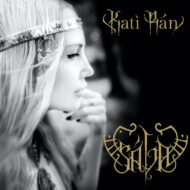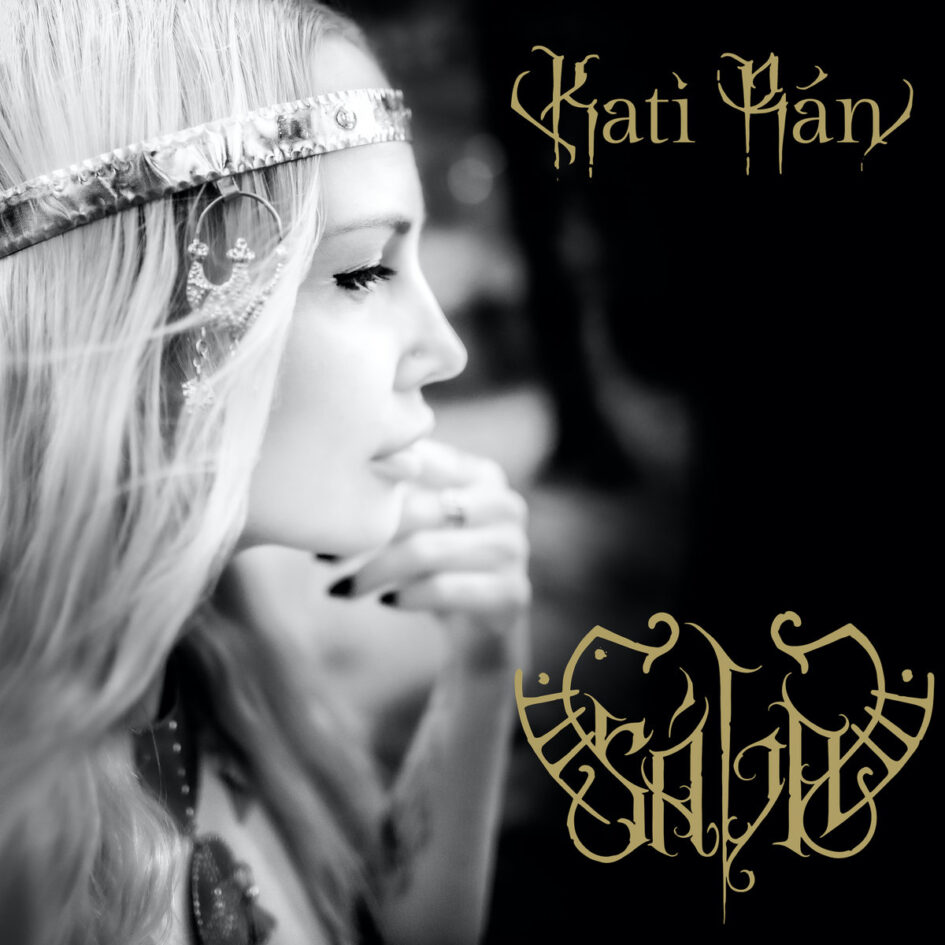 Every so often, one of the many albums I get sent to review presents me with a challenge. Sometimes it’s an expected challenge, like how do I categorise this particular example of genre roulette accurately enough to review it, and sometimes it’s anything but. SÁLA falls in the latter category, and that’s because I’ve yet to actually finish the thing. Not in the sense of it being awful, but in the sense that it’s not only perfectly up my street and incredibly complex and multilayered in the best possible way, it’s also outrageously good, and I haven’t yet managed to move past the first 5-6 tracks and actually listen to the rest of it. This is Dark Nordic (Neo)Folk done superlatively well, and while there’s more in here than just that – not to mention a stacked list of guest artists – the core delight here is a really solid slice of dark, heavy, melancholic Nordic neofolk. I also want to stress that this really isn’t a metal album in any meaningful sense of the word: this is folk through and through, of the Nordic, Dark and Neo varieties. I don’t love it any less for not being a metal album (folk was my original love in life, long before metal), but it may not be every metalhead’s cup of tea, unless you’re also heavily into straight folk music.
Every so often, one of the many albums I get sent to review presents me with a challenge. Sometimes it’s an expected challenge, like how do I categorise this particular example of genre roulette accurately enough to review it, and sometimes it’s anything but. SÁLA falls in the latter category, and that’s because I’ve yet to actually finish the thing. Not in the sense of it being awful, but in the sense that it’s not only perfectly up my street and incredibly complex and multilayered in the best possible way, it’s also outrageously good, and I haven’t yet managed to move past the first 5-6 tracks and actually listen to the rest of it. This is Dark Nordic (Neo)Folk done superlatively well, and while there’s more in here than just that – not to mention a stacked list of guest artists – the core delight here is a really solid slice of dark, heavy, melancholic Nordic neofolk. I also want to stress that this really isn’t a metal album in any meaningful sense of the word: this is folk through and through, of the Nordic, Dark and Neo varieties. I don’t love it any less for not being a metal album (folk was my original love in life, long before metal), but it may not be every metalhead’s cup of tea, unless you’re also heavily into straight folk music.
And like so much of the best folk, an awful lot of SÁLA sounds like it hasn’t so much been created as simply brought to light, having already existed for who knows how long. The title is the Old Norse word for both “sea” and “soul”, which – as a good title should – perfectly encapsulates what’s going on here: this album is very much a journey, but one that encompasses the physical act of travelling and a spiritual journey. Rán herself describes it as a “musical and personal travelogue”, which is a pretty good way of putting it. Incidentally, if languages are your thing, you’re in more luck than I can quite explain: SÁLA includes passages sung and/or spoken in Old Norse, Icelandic, Norwegian and English, and each language adds something unique to the overall effect of the album and the texture of individual tracks. Also, someone within the Kati Rán camp is very on the ball, and quite a few of the tracks on this album have already got lyrics in place on Spotify, which is much appreciated for an album with as much going on musically and lyrically as SÁLA.
Other things going on under the skin of this album include the aforementioned roster of guest artists, such as the one and only Gaahl (yes, that Gaahl), one of Napalm Death (Mitch Harris), renowned Norwegian jazz musician Karl Seglem, a contrabassist who’s previously played with Brian Eno and Björk, an Icelandic female choir (Umbra Ensemble), and assorted other talented people from bands like Heilung and Völuspá. Then there’s Rán herself: as well as her own music, she’s also a historical instrumentalist, who’s been involved in TV and film including Vikings: Valhalla. Oh, and she’s Dutch, which is notable thanks to the complete lack of the Dutch language on this album: everything here is in an additional language as far as Rán herself goes, which is impressive in its own right. As the above might indicate, there’s an abundance of traditional instrumentation going on here, which I’m not even going to pretend I’ve got the expertise to identify and pass judgement on. There is a marimba made of lava stone though, and that’s definitely a new one on me. And then, on top of all of this, the album itself draws inspiration from Norse mythology and the Nine Daughters of Ægir and Rán (the mythological character, not Kati Rán, although that is a stage name), namely: Blóðughadda, Bylgja, Dröfn (or Bára), Dúfa, Hefring (or Hevring), Himinglæva, Hrönn, Kólga, and Uðr (or Unn).
All of this means that I don’t really have much in the way of reference points, for fans of, comparisons and so on, because apart from the issue of how do you even begin to describe genres as varied and yet distinctive as Nordic folk, Dark Folk and Neofolk, there’s the issue that even by the standards of those genres, this is a singular album. Almost bloodymindedly so. Throw in at least half a dozen historical instruments that add to the unique sound, and you’ve basically got an album you just need to listen to. I could describe it until the cows come home and still be no closer to working out if most people are going to like this, so I’m not going to. Which is just as well, because putting this review together has been challenging enough, without trying to analyse all thirteen tracks individually.
Also, talking of cows, it was recorded in a barn in Iceland, because of course it was. I can’t really comment on the historical accuracy of any of the barn or the album as a whole, but I will say that a lot of work has been put into making the whole thing feel organically historical and authentically atmospheric. You could tell me that this is a collection of genuinely historical songs recorded in the field during some sort of recreation of the time/place such sings would have been sung, and I can’t honestly say I’d question it all that much. Because it really doesn’t feel like something that’s been composed, recorded, mastered, produced, as much as it feels like an existing body of work that’s simply been discovered and brought to light, which in my experience is true of an awful lot of really, really good folk. Look at bands like Steeleye Span, Fairport, even current darlings Green Lung – at its best, their music tends to sound like it existed long before the band did. It just sounds old, even if it was written and recorded last week. That takes a lot of skill in multiple fields, not least songwriting, composition, extensive knowledge of the genre and its conventions, and attention to detail, amongst other, less easily defined things.
Attention to detail is one thing SÁLA has in spades. From the mythology that’s carefully woven in with the music, to moving between the multiple languages without missing a beat, to the subtle atmospheric sound effects that are lurking in so many of the tracks (without ever being overdone), to the carefully crafted resonant space that so much of the vocal work inhabits. And that’s without even getting into the lyrics (my Norwegian, Old Norse and Icelandic aren’t up to this, but the English bits are good), the understated interplay between the many and varied voices and instruments involved (there’s a lot, on both fronts), and the carefully crafted overall sound, where each track is its own distinct entity, yet the album has a recognisable sound throughout. Which is quite something coming from a solo artist, a gaggle of guests, and presumably a few session musicians as well: they sound like they’ve been together for years.
As for the individual tracks, I’m not going to pick them apart one by one like I usually do, because this isn’t that kind of album. You listen to SÁLA in its entirety or not at all, because it’s essentially a single entity. Which is partly because of the journey aspect, and partly because pulling single tracks out of a whole like this just…doesn’t work. On a similar note, it’s also one of those albums that can fade into the background if you’re even vaguely paying attention to anything else – very little here could be described as “in your face” (although BÁRA and SEGIĐ MÉR have a go towards the end) – but if you give it your undivided attention, it draws you in in a way that very few albums can.
That said, I will highlight the title track as a superb introduction to the album as a whole, and BLODBYLGJE as, well, a masterpiece. One of the things I’m most looking forward to when I’ve finished this review, is lying down in a darkened room (partly for aesthetics, partly because this review has been Hard Work), switching my brain off, and putting BLODBYLGJE on repeat. And I don’t mean switch my brain off in the sense that this is mindless music, I mean it in the sense that it’ll take you places if you switch off enough to let it.
Now, if you’ll excuse me, my darkened room awaits.
(10/10 Ellie)

Leave a Reply